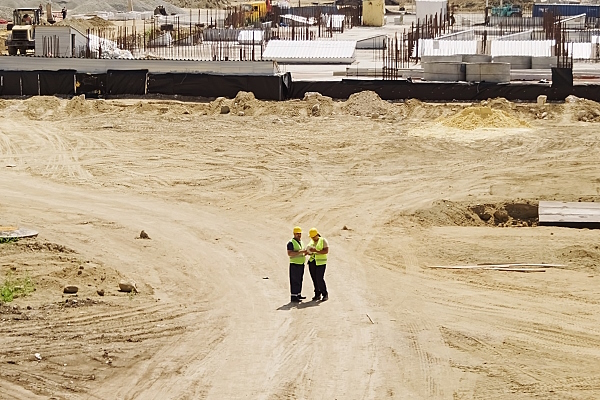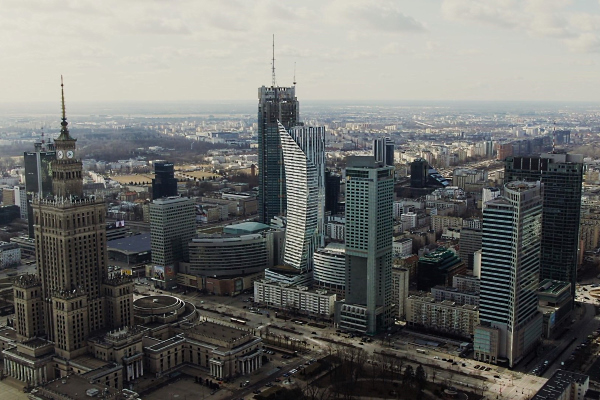After receiving the necessary documents and project presentation, our team will try to review your request as soon as possible, and leading experts will offer the best options for project funding.
It is an important part of Qatar's strategy to maintain its position as the world's largest LNG exporter and meet the growing global demand for gas.
The project involves the construction of additional LNG production facilities, including the construction of new liquefaction trains with the help of international partners. This expansion is being led by Qatar Petroleum is the state-owned corporation responsible for the exploration, production, and export of Qatar's oil and gas resources.
GCAM Investment Group offers a wide range of financial solutions for the development of large projects in the oil and gas sector. We develop financial models for our customers, offer long-term investment loans and much more.
Contact us for details.
North Field: the largest natural gas field in the world
North Field, also known as the North Dome, is a massive offshore natural gas field located in the Persian Gulf, off the northeastern coast of Qatar.It is one of the world's largest gas fields and holds significant reserves of natural gas, making Qatar one of the leading global LNG exporters.
The North Field was discovered in 1971 by the Qatar General Petroleum Corporation (now known as Qatar Petroleum). It spans an area of approximately 6,000 square kilometers and is shared between Qatar and Iran (where it is known as South Pars). This huge field contains estimated recoverable gas reserves of about 900 trillion cubic feet, or 25 trillion cubic meters.
The North Field is primarily a natural gas field, with limited oil production. Qatar has been extracting natural gas from the field since the 1990s, and its production has steadily increased over the following years. The gas extracted from the this field is processed and exported mainly in the form of LNG, which is transported to various countries around the world.
Qatar has established a powerful and very expensive LNG infrastructure to export the gas from the North Field. The country has several LNG liquefaction plants, including Ras Laffan Industrial City, which is considered a major industrial hub. Largely thanks to the North Field, Qatar is currently the largest LNG exporter in the world, accounting for a significant portion of global LNG supplies.
The country's LNG exports have contributed significantly to its economic growth and development.
Need for gas field expansion
Qatar has been implementing various expansion projects to increase its LNG production capacity from the North Field.In September 2021, Qatar Petroleum announced the North Field Expansion project, which aims to increase the country's LNG production capacity by 43% by 2027. This project involves new LNG production facilities, including additional liquefaction trains.
The expansion aims to significantly increase LNG production capacity by 2027.
Qatar's North Field East investment project is driven by the following factors and strategic considerations:
1. Growing global demand. There is a rising global demand for LNG as a cleaner and more environmentally friendly fuel source compared to other fossil fuels. Moreover, this fuel helps to support the energy independence of European countries that seek to reduce their dependence on pipeline gas.
2. Expanding LNG market share. Qatar aims to retain and expand its market share in the LNG industry. By increasing its production capacity through the NFE project, Qatar can continue to be a key player in the global LNG market and secure long-term contracts with international consumers around the world.
3. Capitalizing on North Field reserves. The North Field is one of the world's largest natural gas fields, shared between Qatar and Iran. Qatar aims to maximize the utilization of its vast reserves in the North Field to export gas, particularly in the form of LNG.
4. Strengthening economic development. The NFE project contributes to Qatar's broader goals of economic development and diversification. The revenue generated from LNG exports supports funding for various sectors, including infrastructure, education, healthcare, and social welfare programs, thereby driving overall national development.
It is clear that the efficient use of the North Field will require huge investments in the coming years, but the potential economic benefits of this project cannot be overestimated. The current construction has attracted huge LNG investments, requiring the most advanced natural gas production, liquefaction and transportation technologies provided by various countries.
Key information about the North Field East LNG Project
The NFE project is a significant investment for Qatar and is expected to have a positive impact on its economy.It will create employment opportunities during the construction phase and contribute to long-term revenue generation through increased LNG exports.
Expansion plans
The NFE project was initially planned to add new production capacity to the existing infrastructure in Ras Laffan Industrial City, Qatar's major LNG hub. The expansion plans involve the construction of four mega-trains, each capable of producing approximately 8 million tons per annum of LNG. This will result in an overall increase of about 32 MTPA of LNG production capacity.Qatargas expects a significant increase in LNG production capacity in Qatar from the current 77 MTPA to approximately 110 MTPA, to be achieved as early as 2025. Moreover, the next phase of the expansion of the North Field, according to the plans of investors, will increase the overall production capacity to 126 million tons per anuum by 2027.
Project costs
This is an extremely expensive project, estimated at about $29 billion.Given the scale and complexity of LNG facilities, the costs can vary based on multiple factors, including construction expenses, engineering and design costs, procurement of equipment and materials, labor expenses, infrastructure development, and environmental and safety considerations.
Among the largest partners in this project are the British Shell, the French company TotalEnergies, the Italian company Eni, as well as ConocoPhillips and ExxonMobil.

Technological advancements
The NFE investment project incorporates advanced LNG technologies to enhance efficiency and reduce environmental impacts.It includes the introduction of the latest generation LNG liquefaction technology, known as Air Products AP-X Process, which is expected to improve energy efficiency and reduce greenhouse gas emissions.
Experts cite energy efficiency, environmental sustainability, modular design, high flexibility and scalability as the advantages of this technology,
Air Products has played a vital role in Qatar's liquefied natural gas industry by supplying crucial equipment and technology for various LNG trains operating in Ras Laffan. AP-C3MR LNG Process technology was employed in the initial LNG trains in Qatar, which commenced production in 1996. This technology was very important in the early stages of local LNG industry development.
Timeline and schedule
The NFE project was officially announced by Qatar Petroleum in September 2019.The construction activities for the project commenced in early 2021. The current phase involves the development of new production facilities, including the construction of additional liquefaction trains and associated infrastructure. The first LNG production train is expected to start operations in 2025. The investment project is planned to be fully completed by 2027.
Economic and social impact
The expansion is crucial for Qatar's economic growth and diversification, as LNG exports have been a major source of income for the country.The NFE project's expansion of LNG production capacity will lead to an increase in export earnings, helping to maintain a favorable trade balance and potentially resulting in a current account surplus. This surplus can strengthen Qatar's overall economic stability and improve its fiscal position.
The gas field expansion also attracts foreign direct investment in Qatar's LNG sector. International companies invest in infrastructure development and technology transfer, fostering collaboration and driving further economic growth. Increased FDI can also bring in engineering expertise, technologies, and best practices that contribute to further sector development.
The construction and operation of the NFE LNG project will generate employment opportunities across multiple sectors. The project will require skilled labor, engineers, technicians, and support staff, leading to job creation in both the short and long term.
Environmental impact
The development and production of natural gas from the North Field have raised environmental concerns.While natural gas is generally considered a cleaner fossil fuel compared to coal and oil, the extraction and processing of natural gas can still have several environmental impacts, such as greenhouse gas emissions to the atmosphere, degradation of the marine ecosystem, some irreversible changes in land use and loss of biodiversity in the Gulf region.
However, Qatar Petroleum and its partners say that serious and costly measures are being taken by project participants to mitigate the environmental impact of the project on the region.
Overall, Qatar has been proactive in implementing strict regulations and initiatives to address environmental concerns. The country has also shown a commitment to sustainable development and reducing emissions, as seen in its investments in clean energy technologies.




























